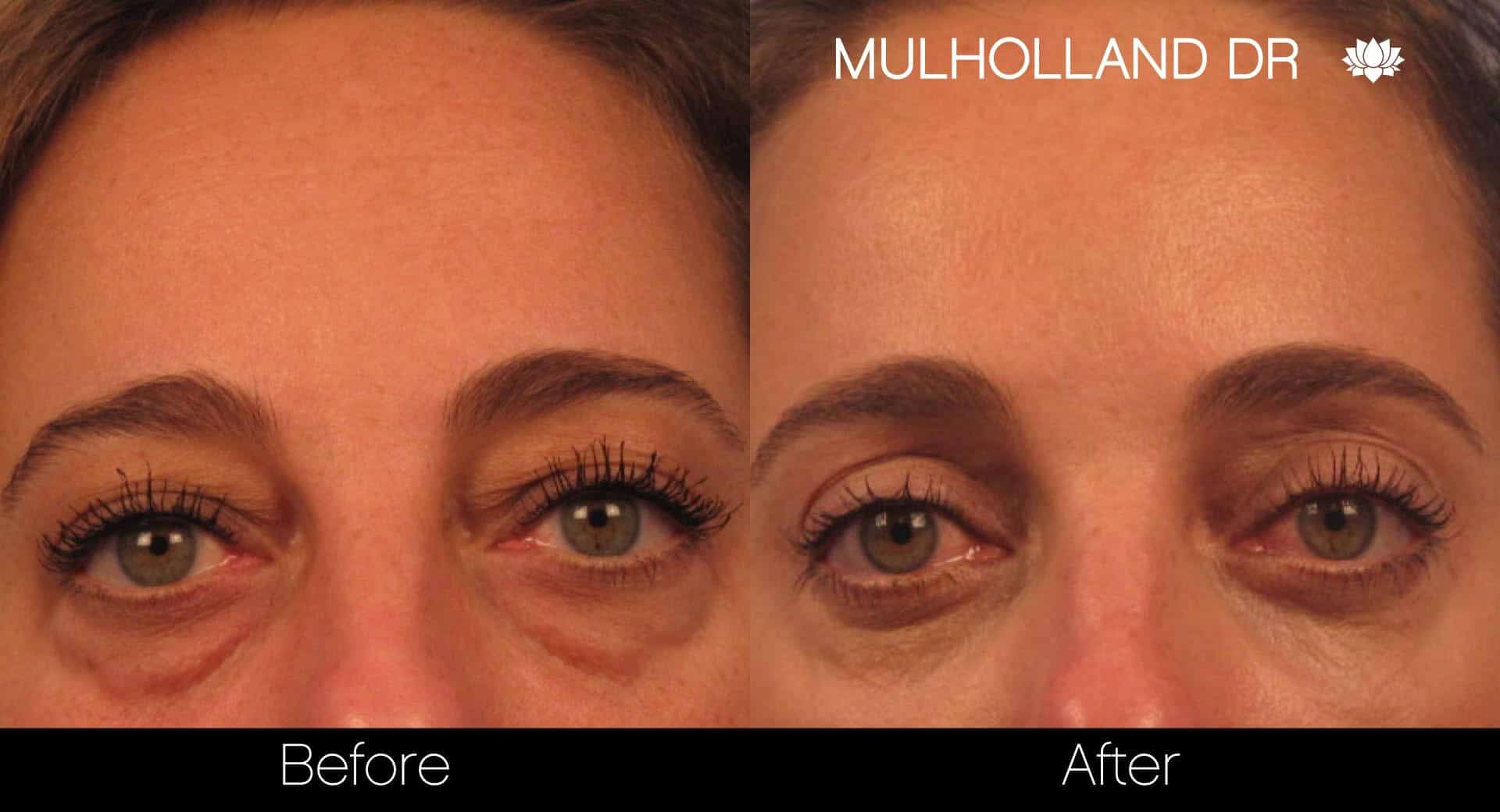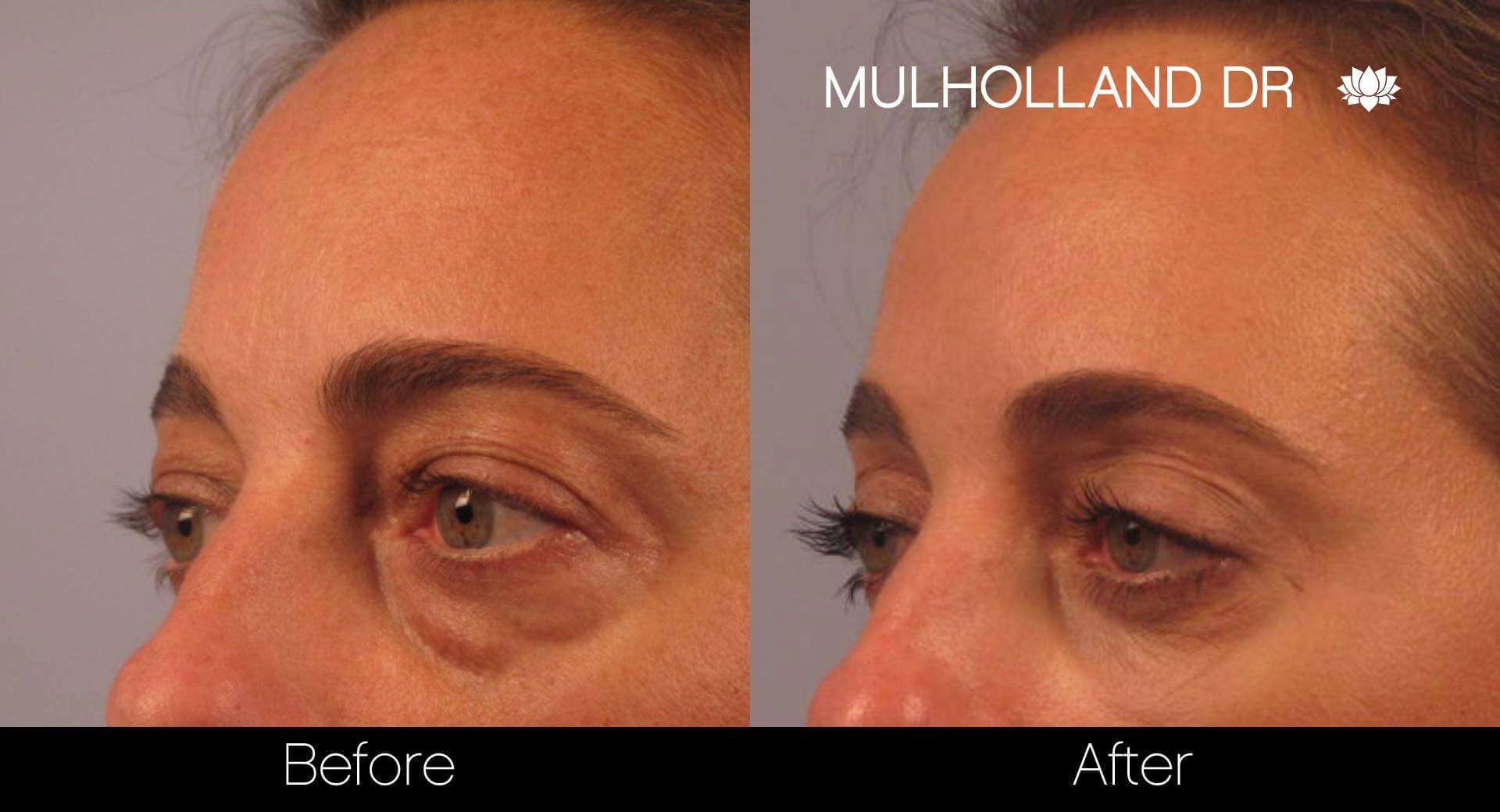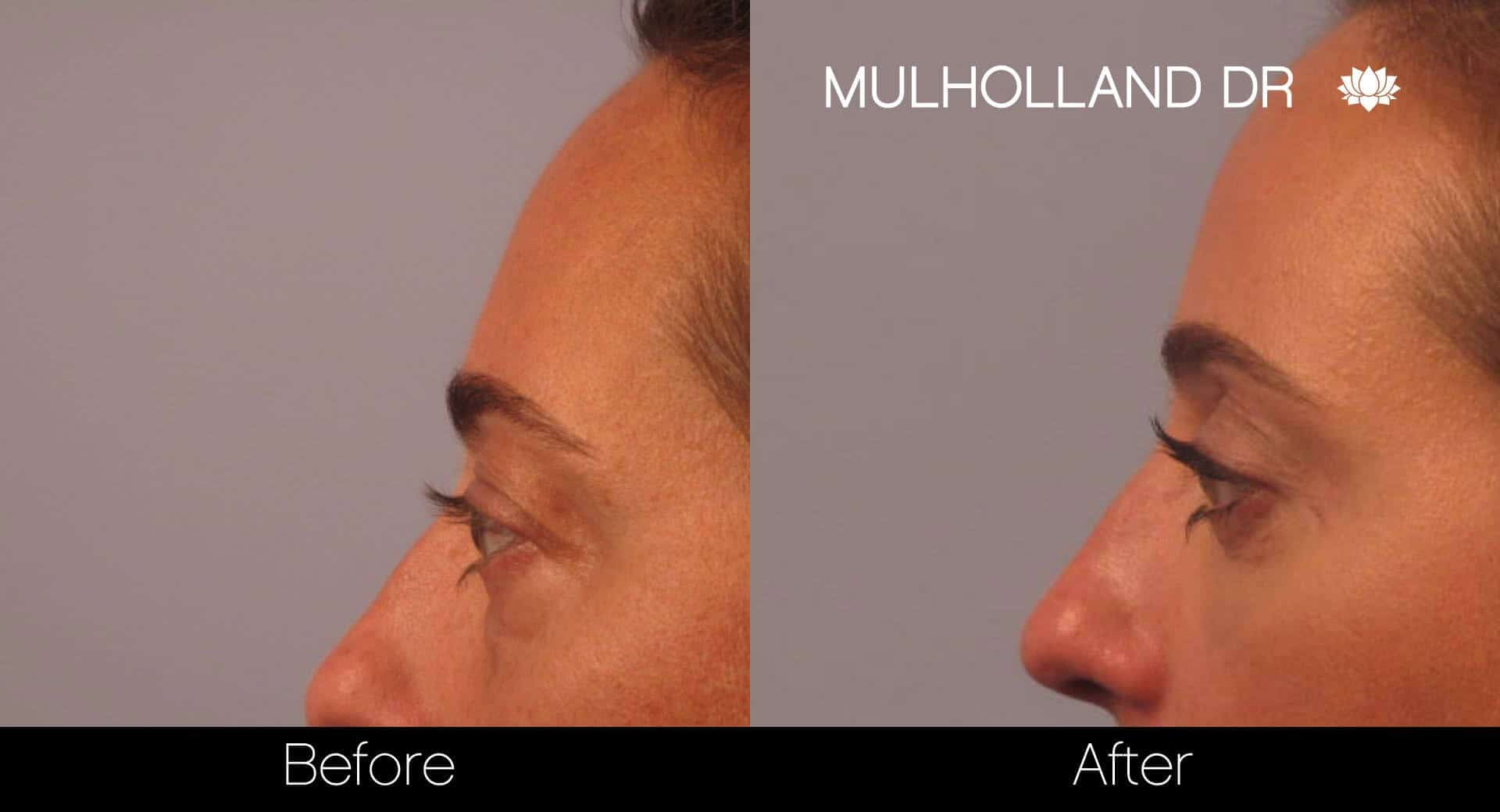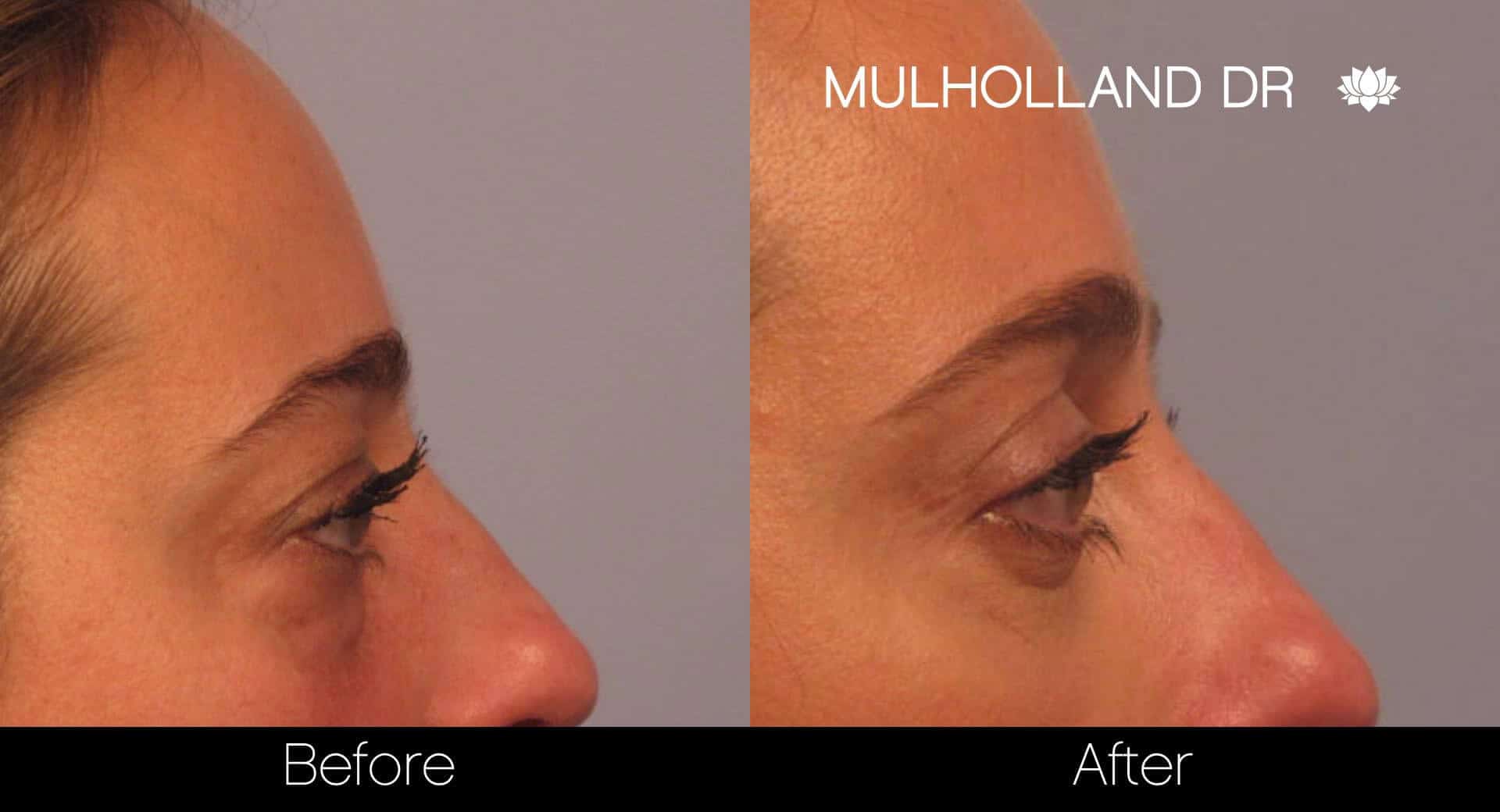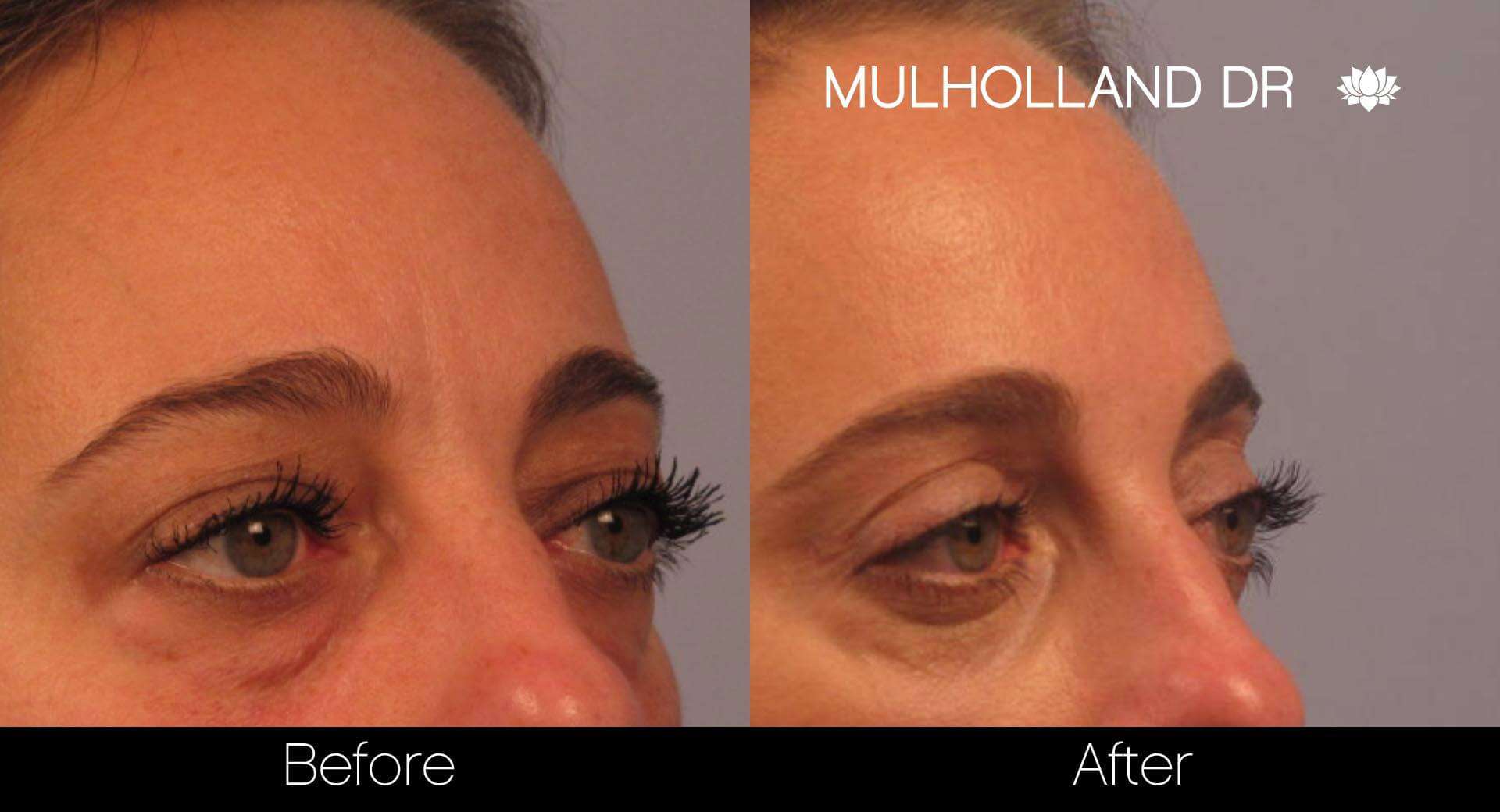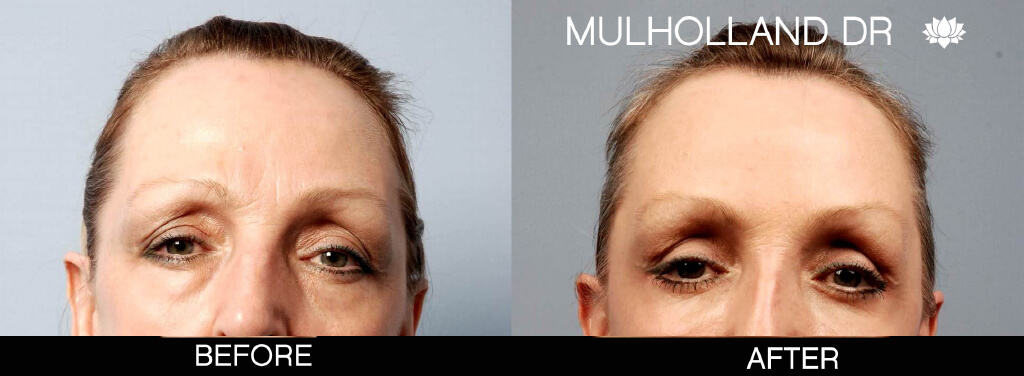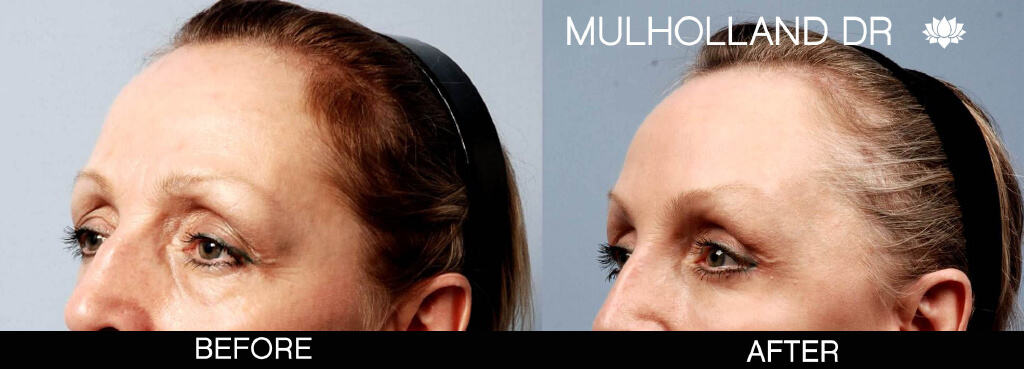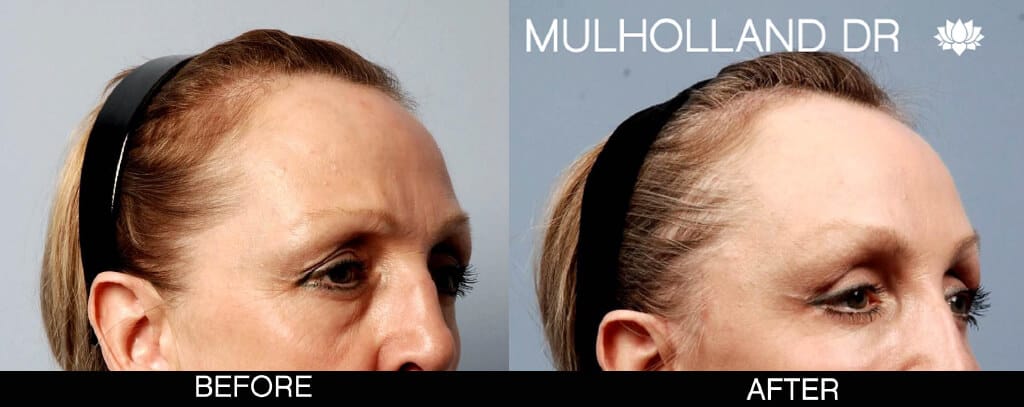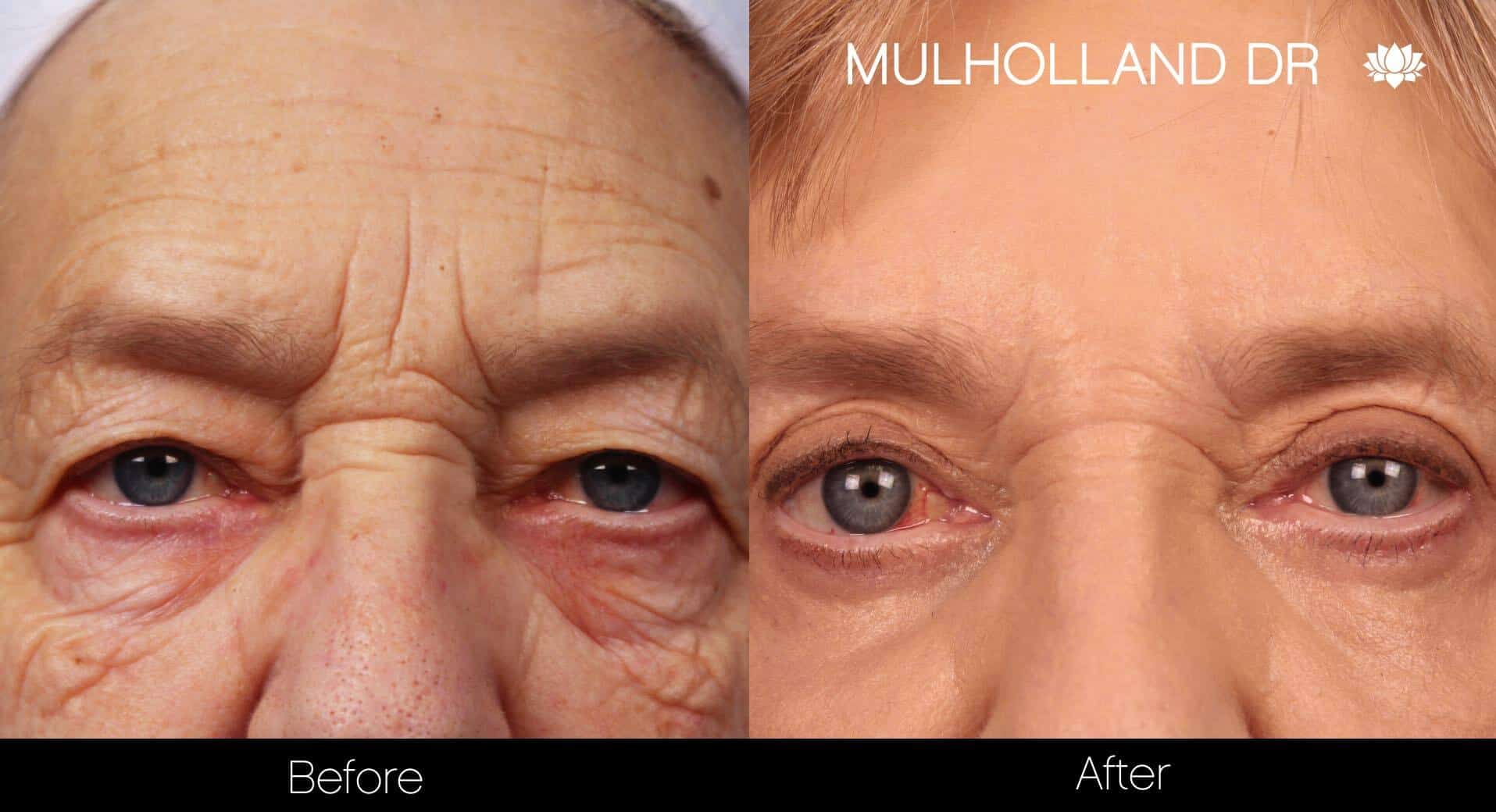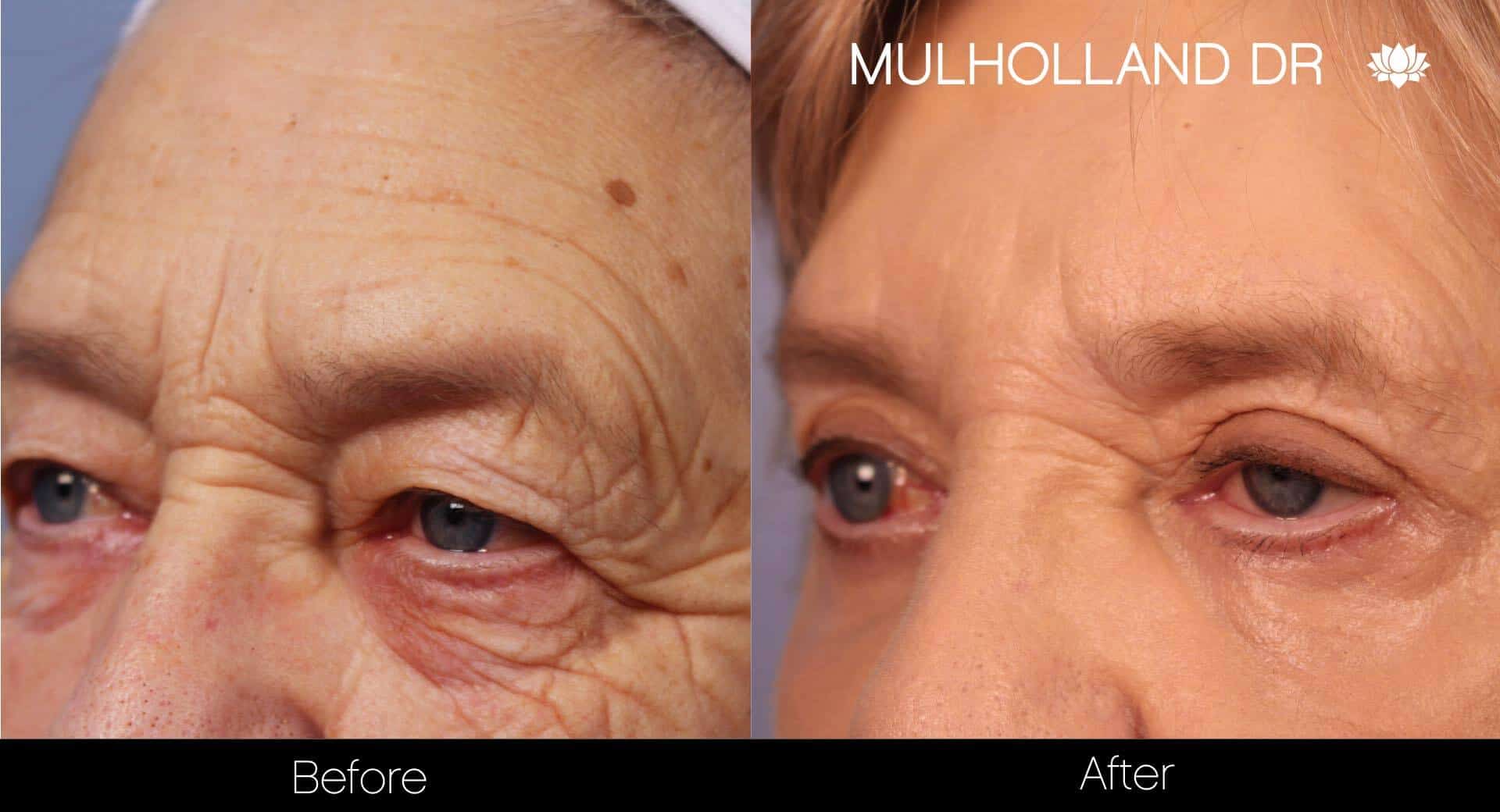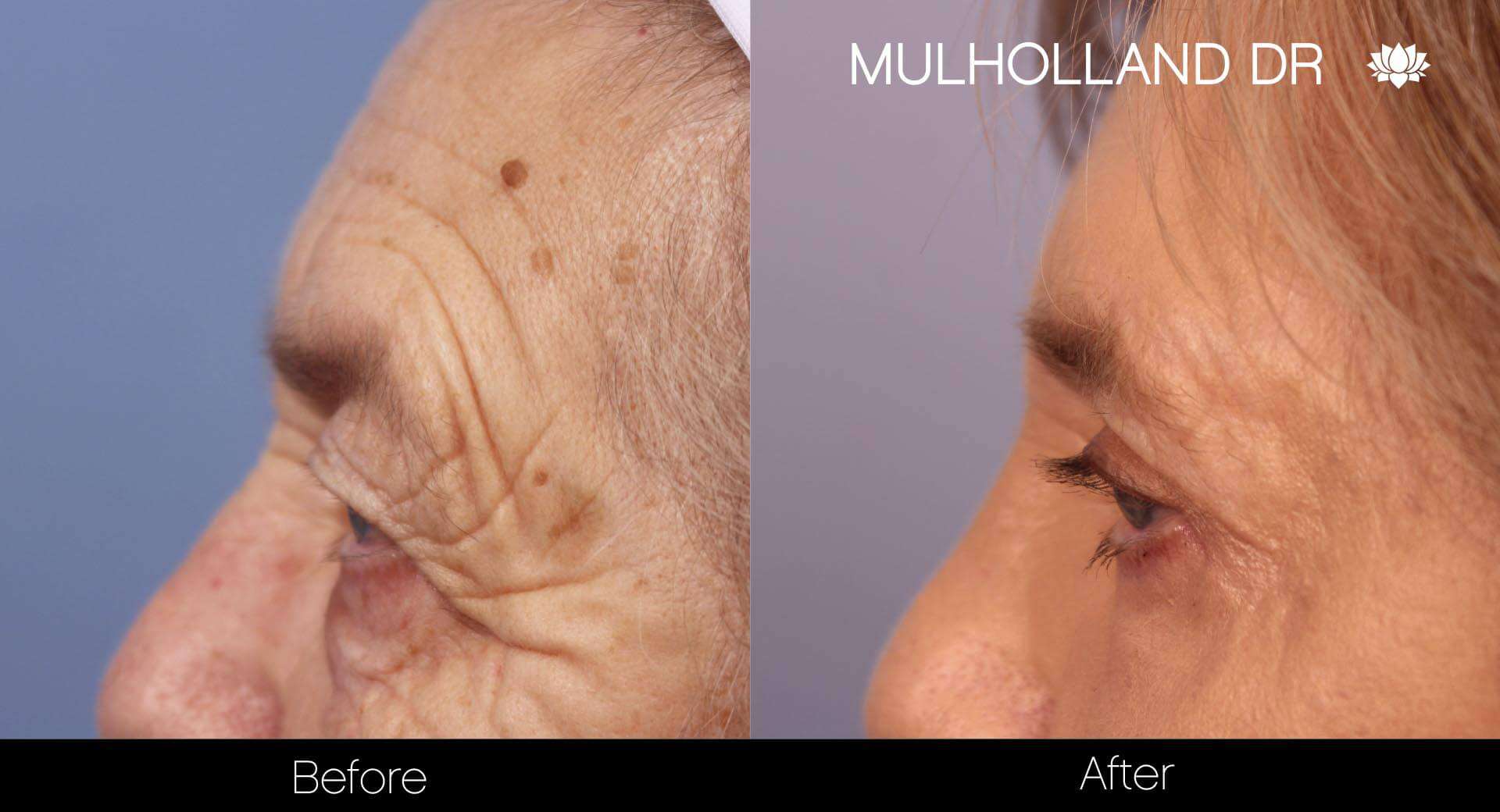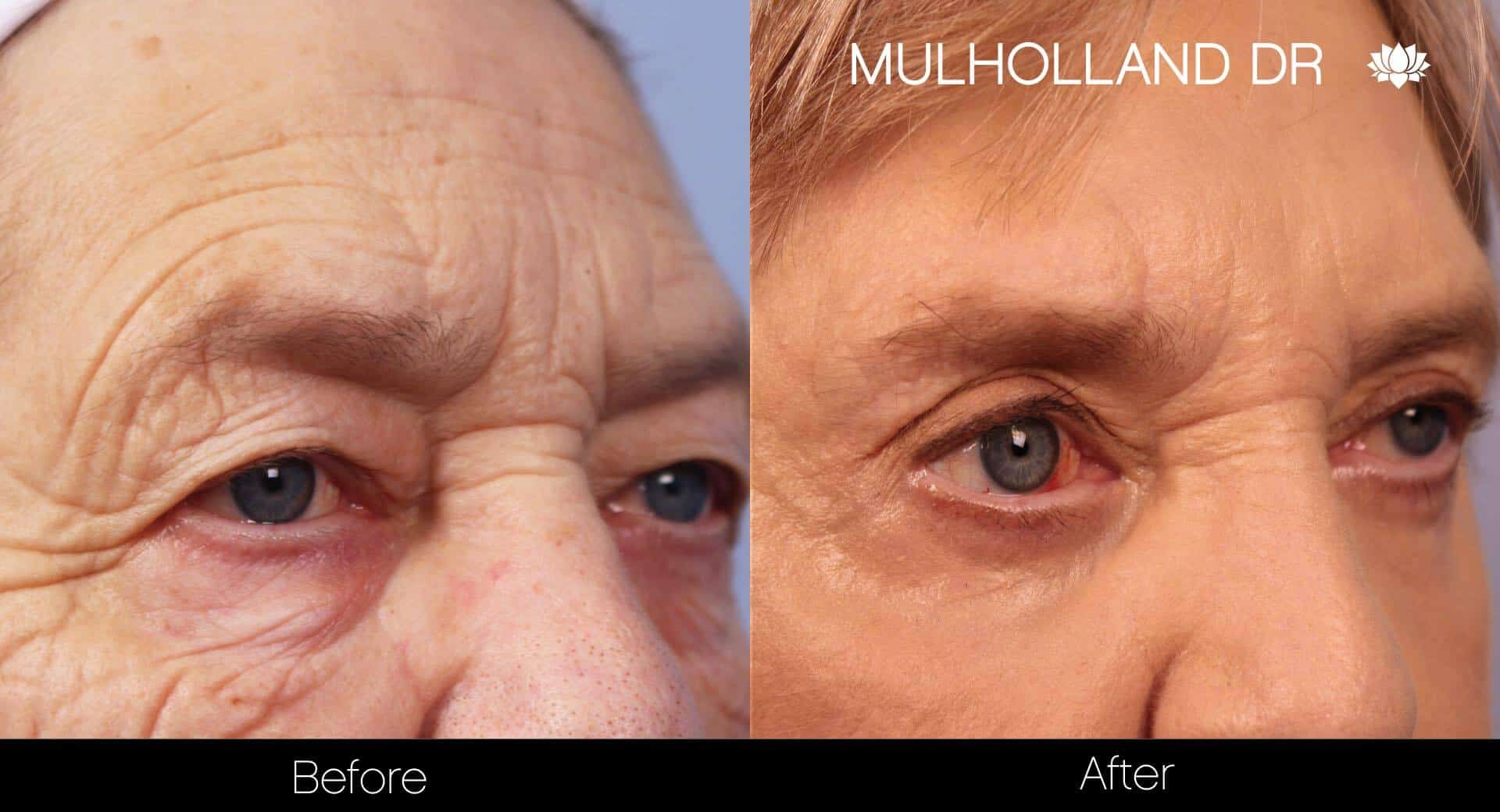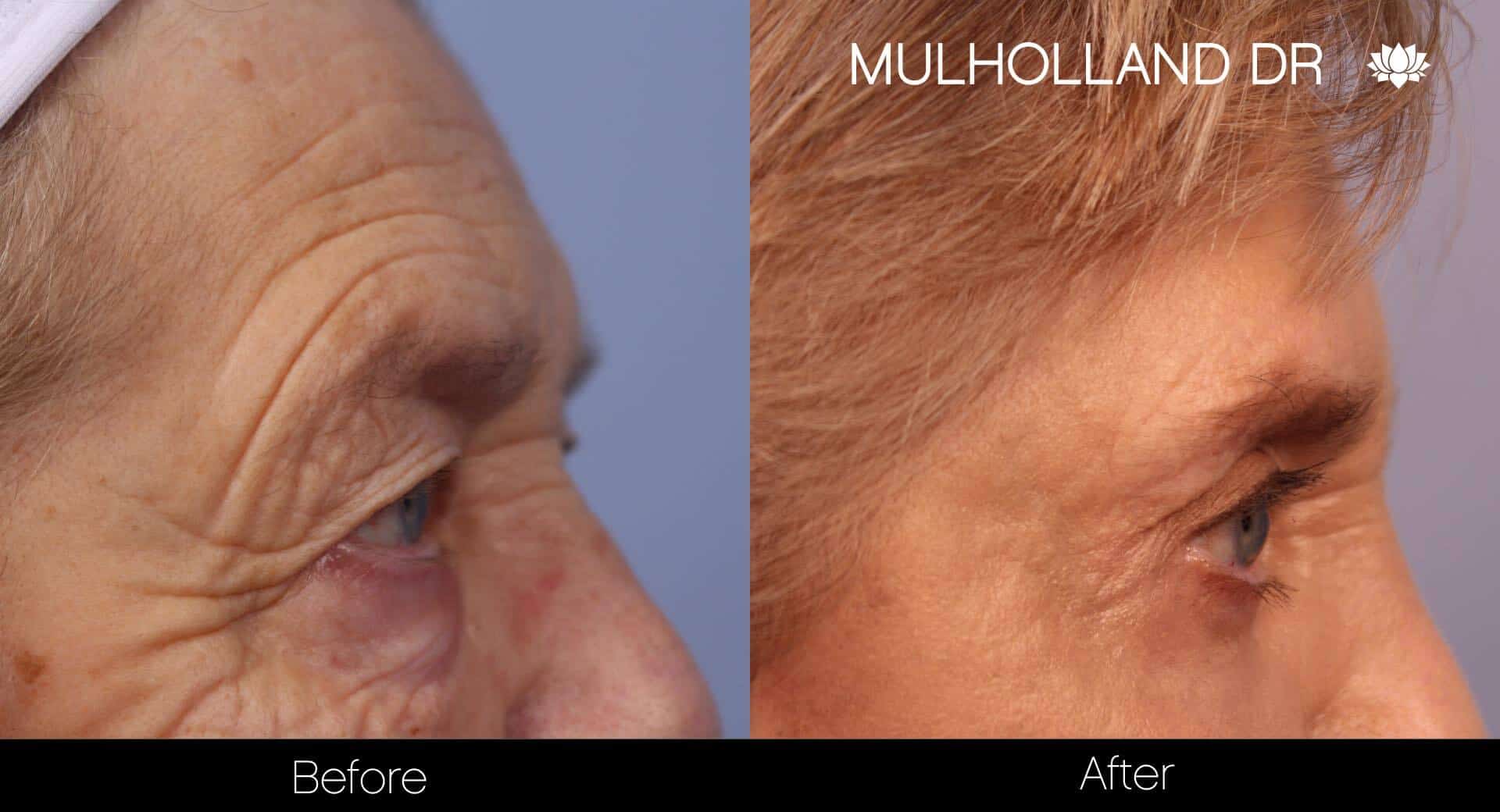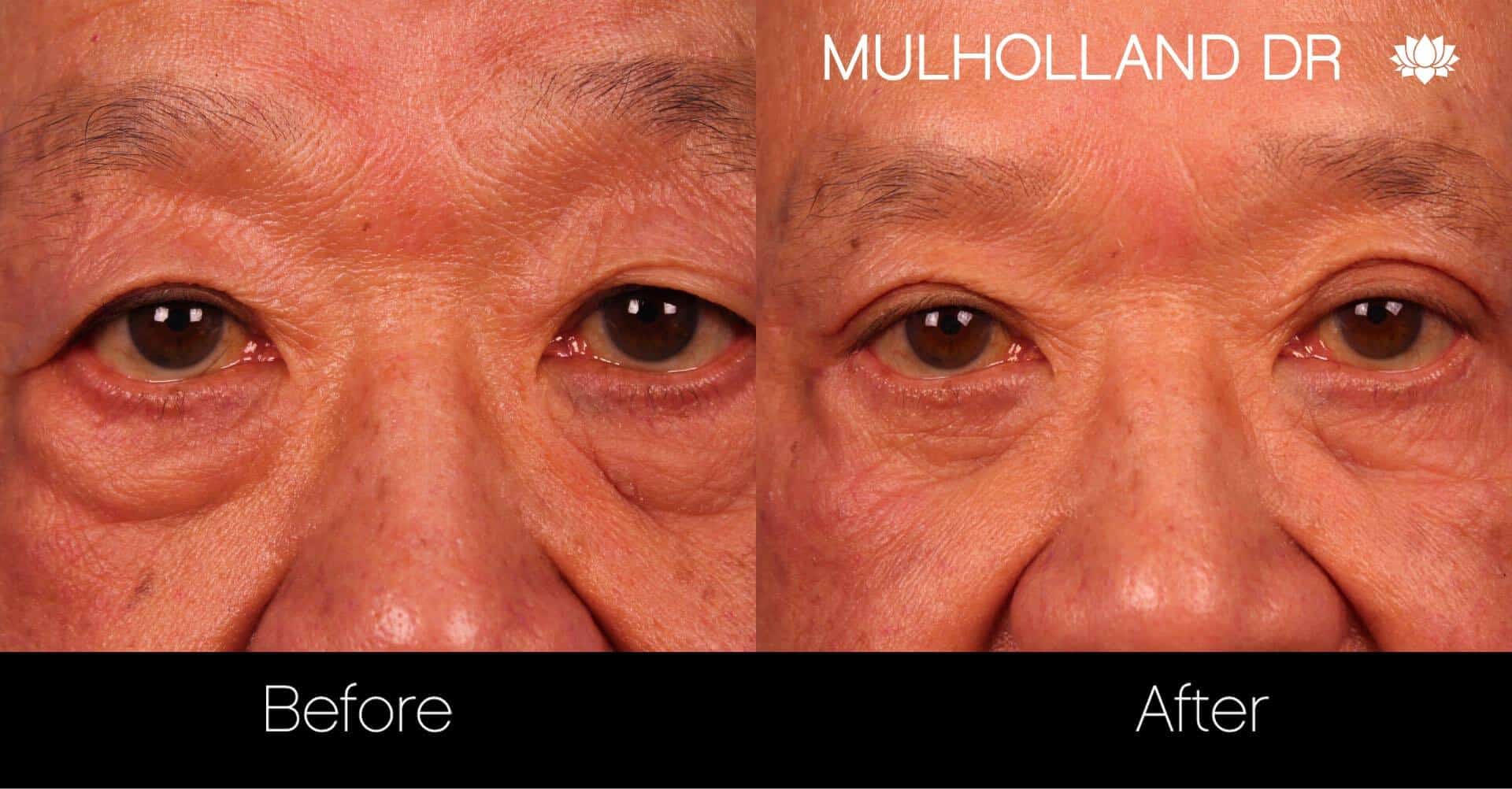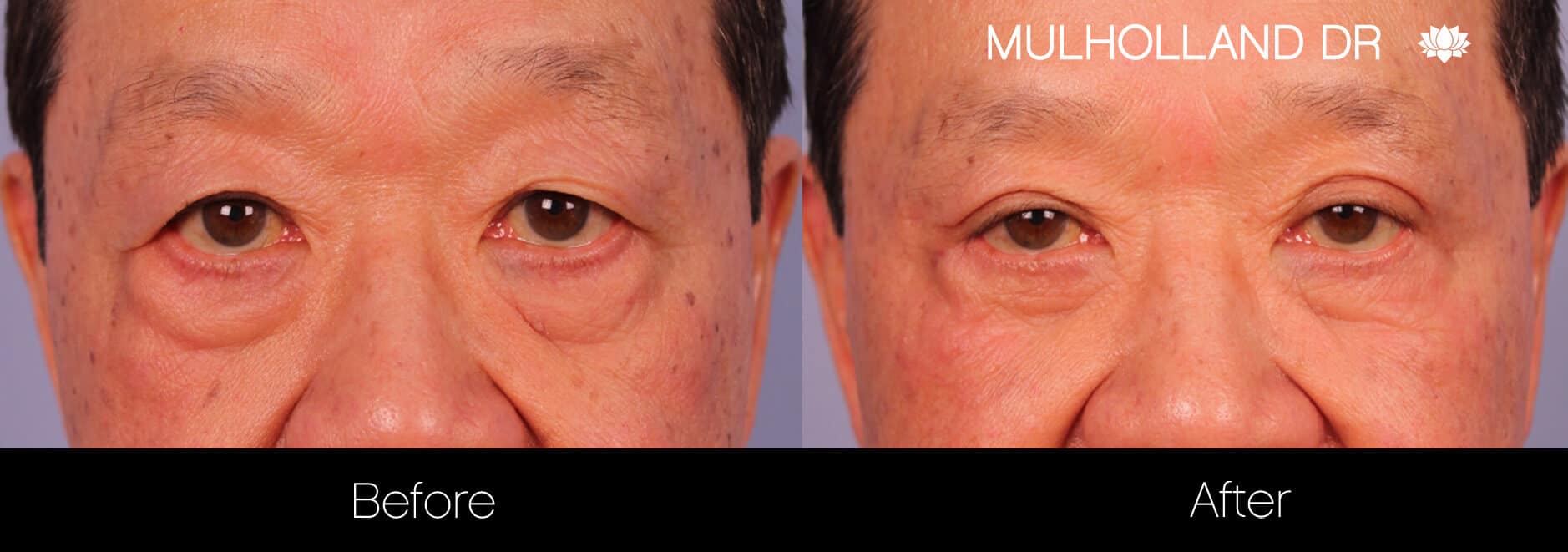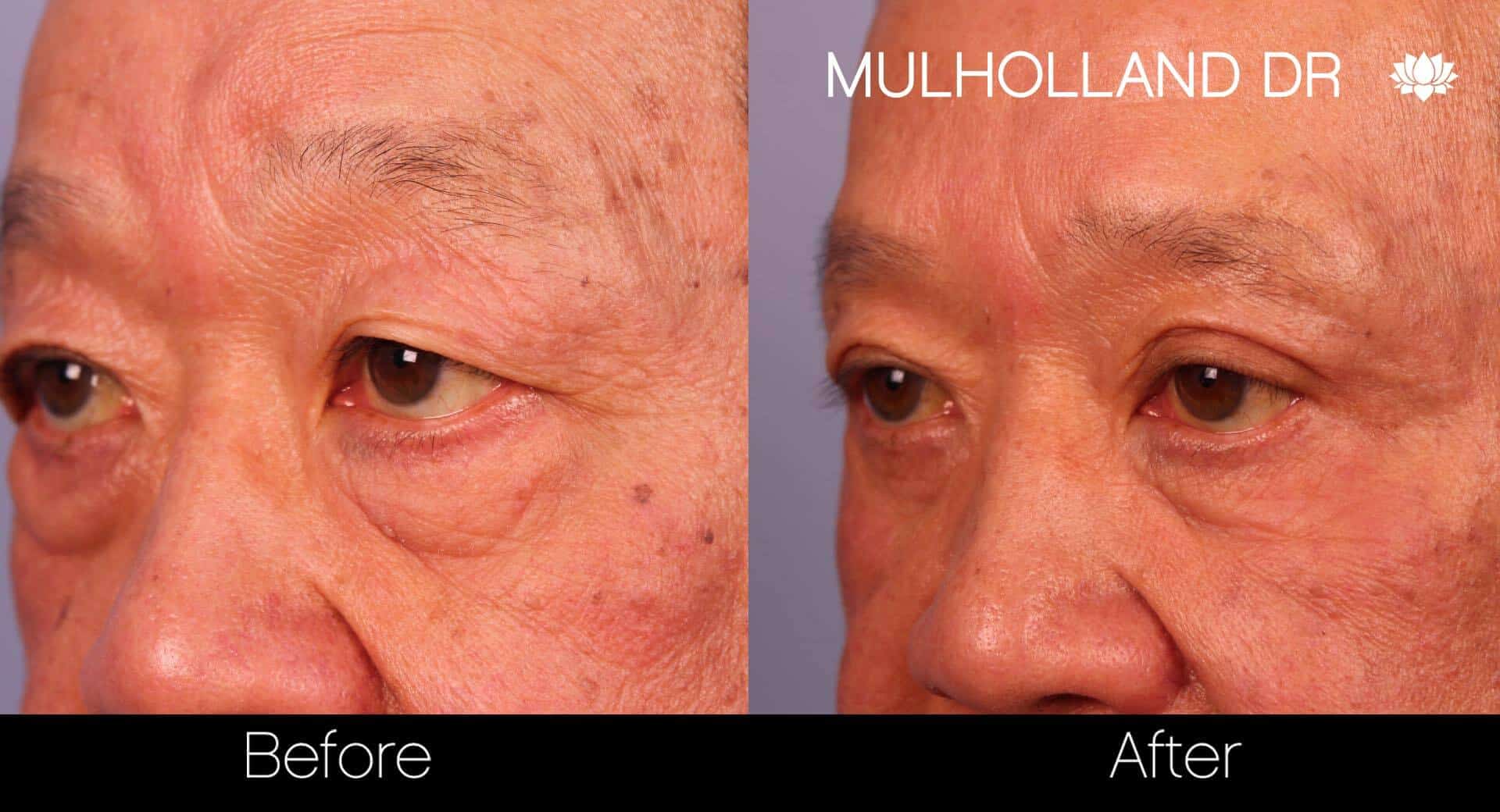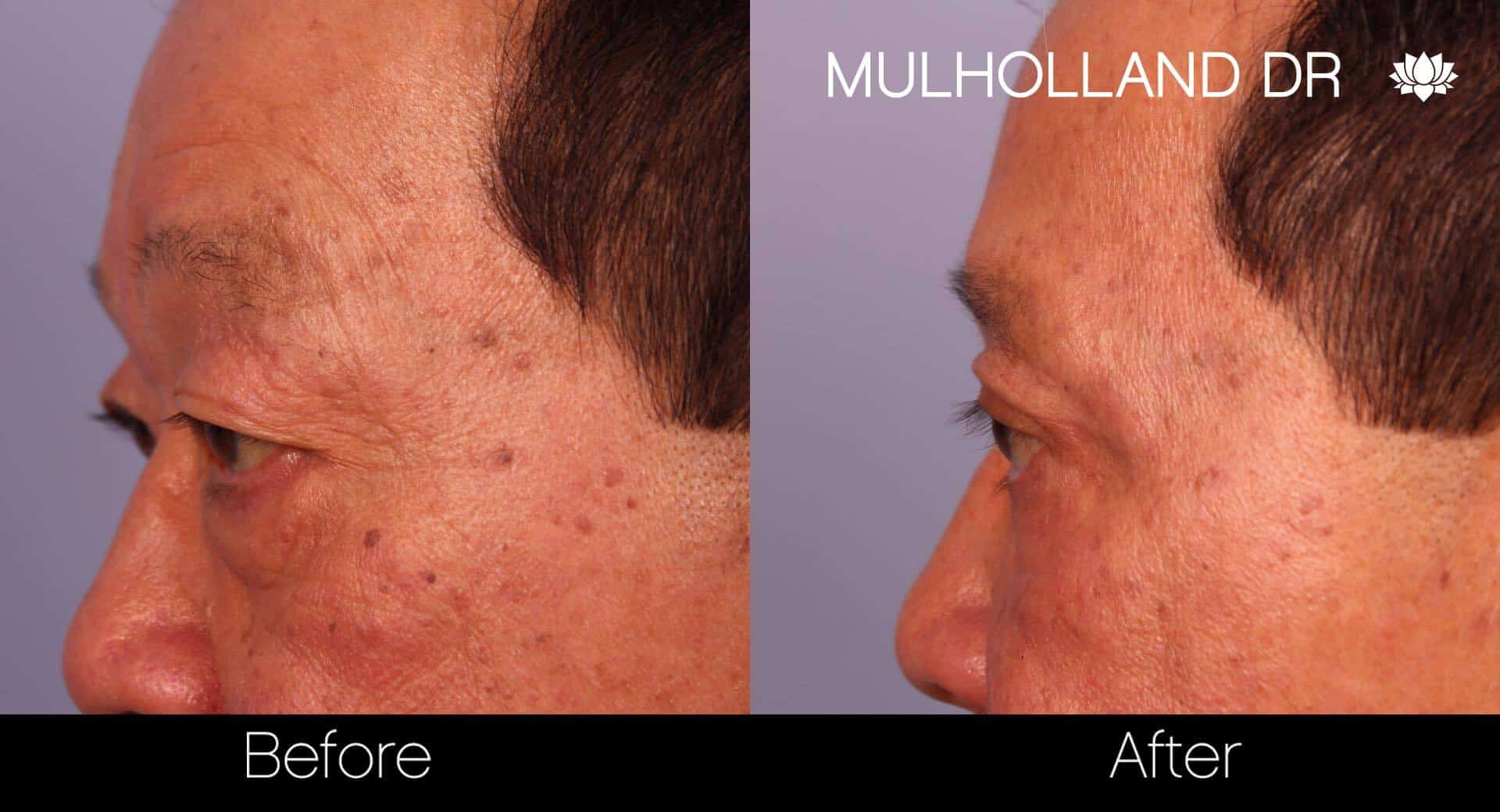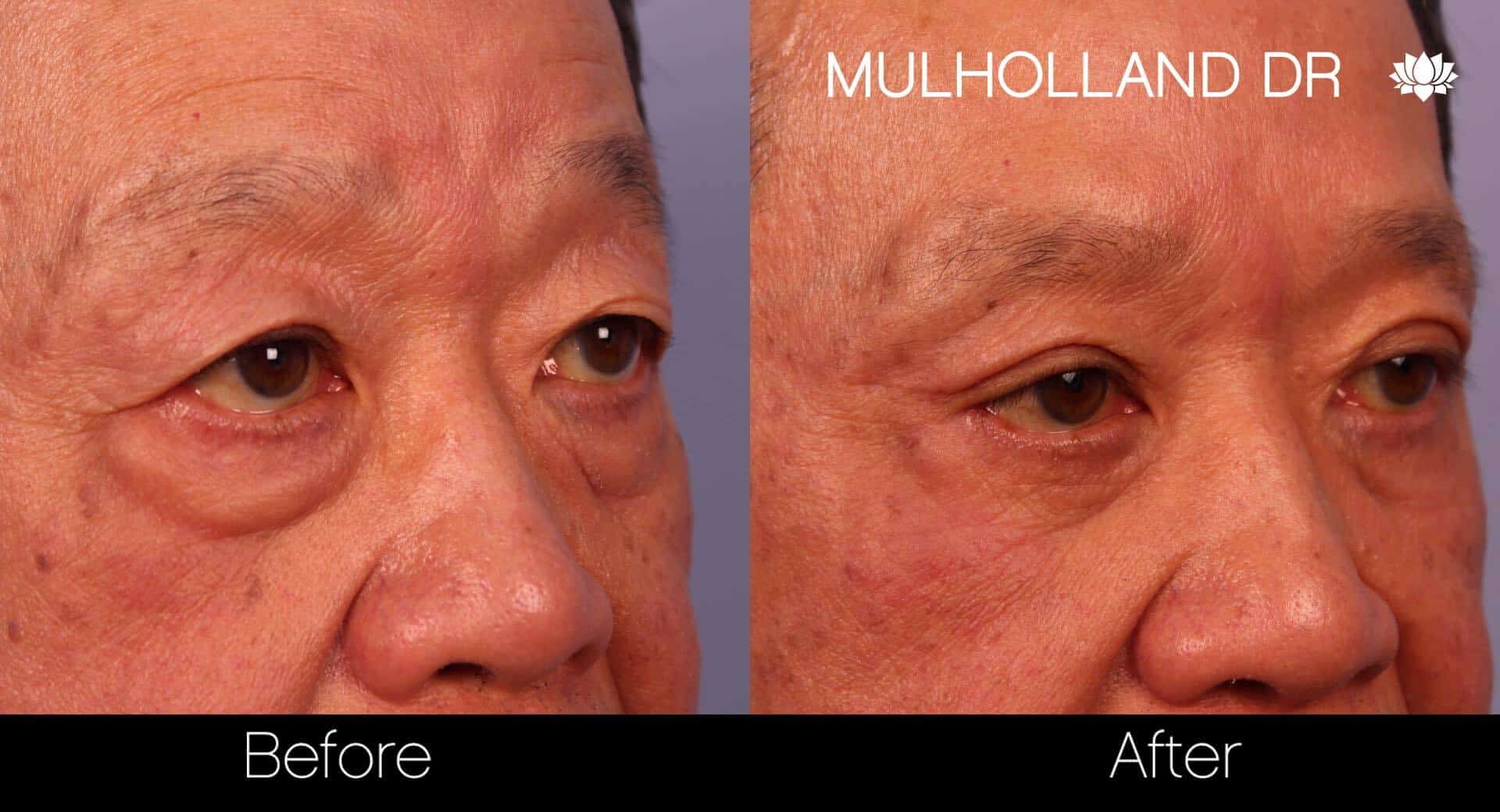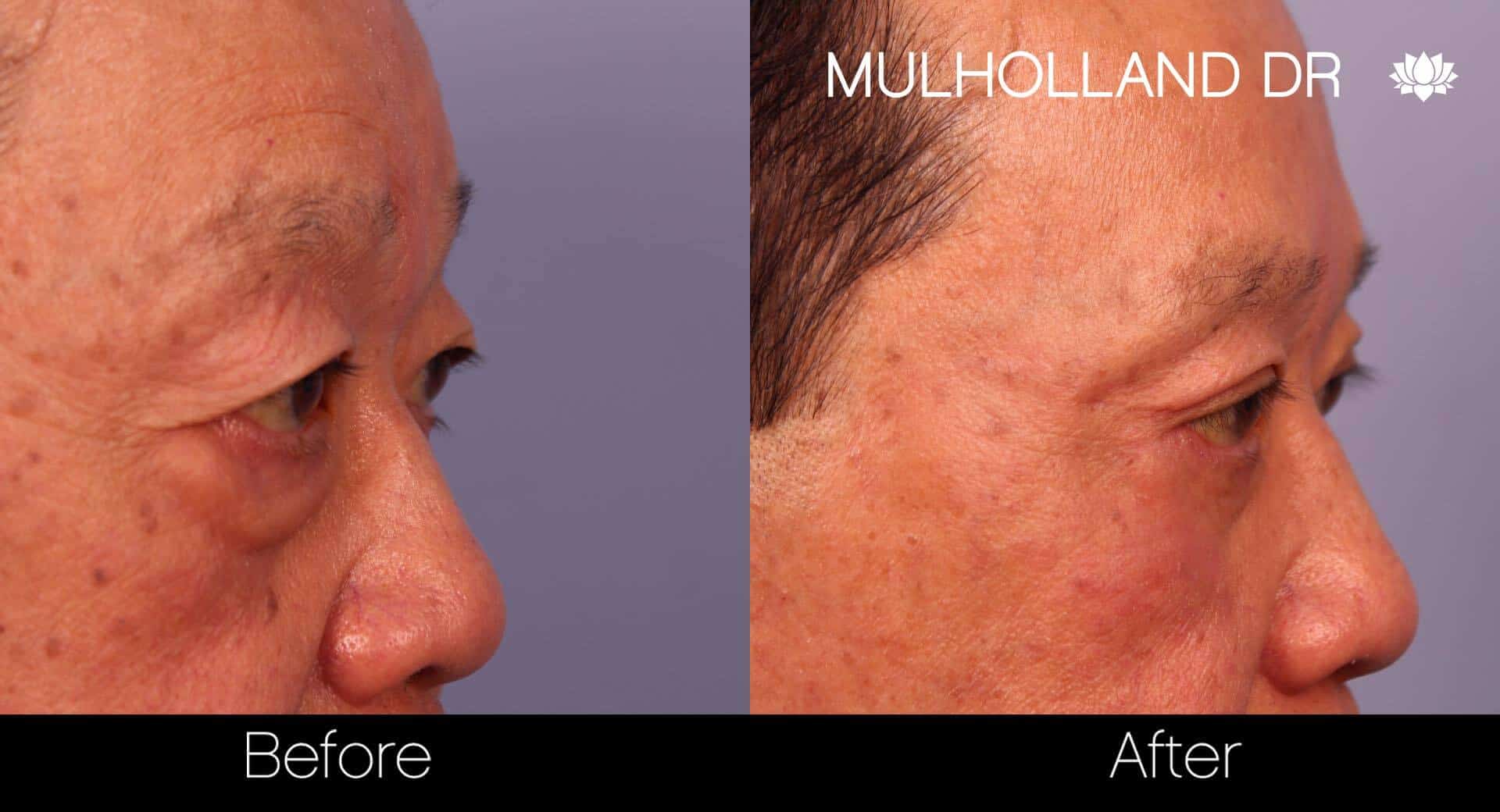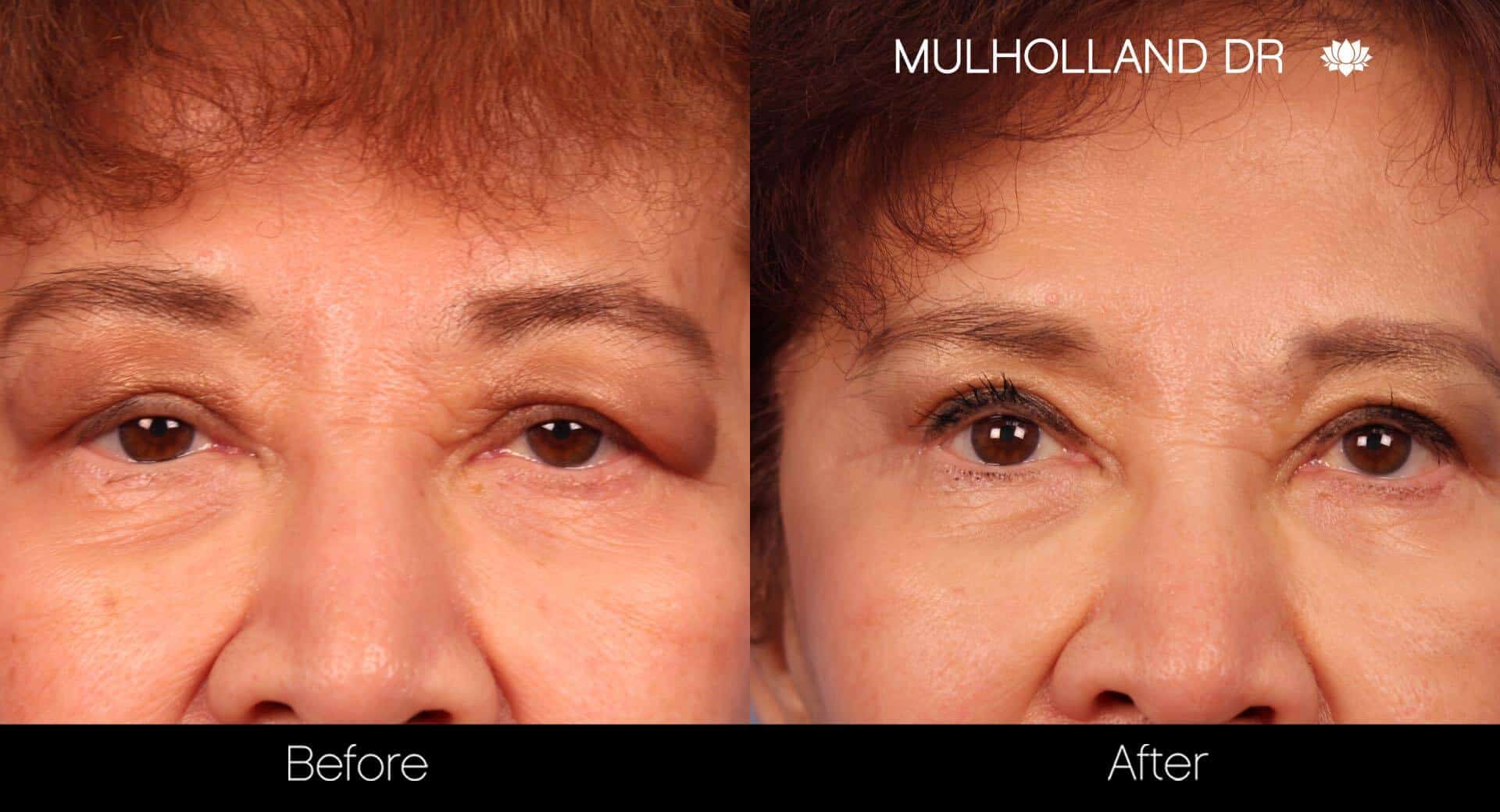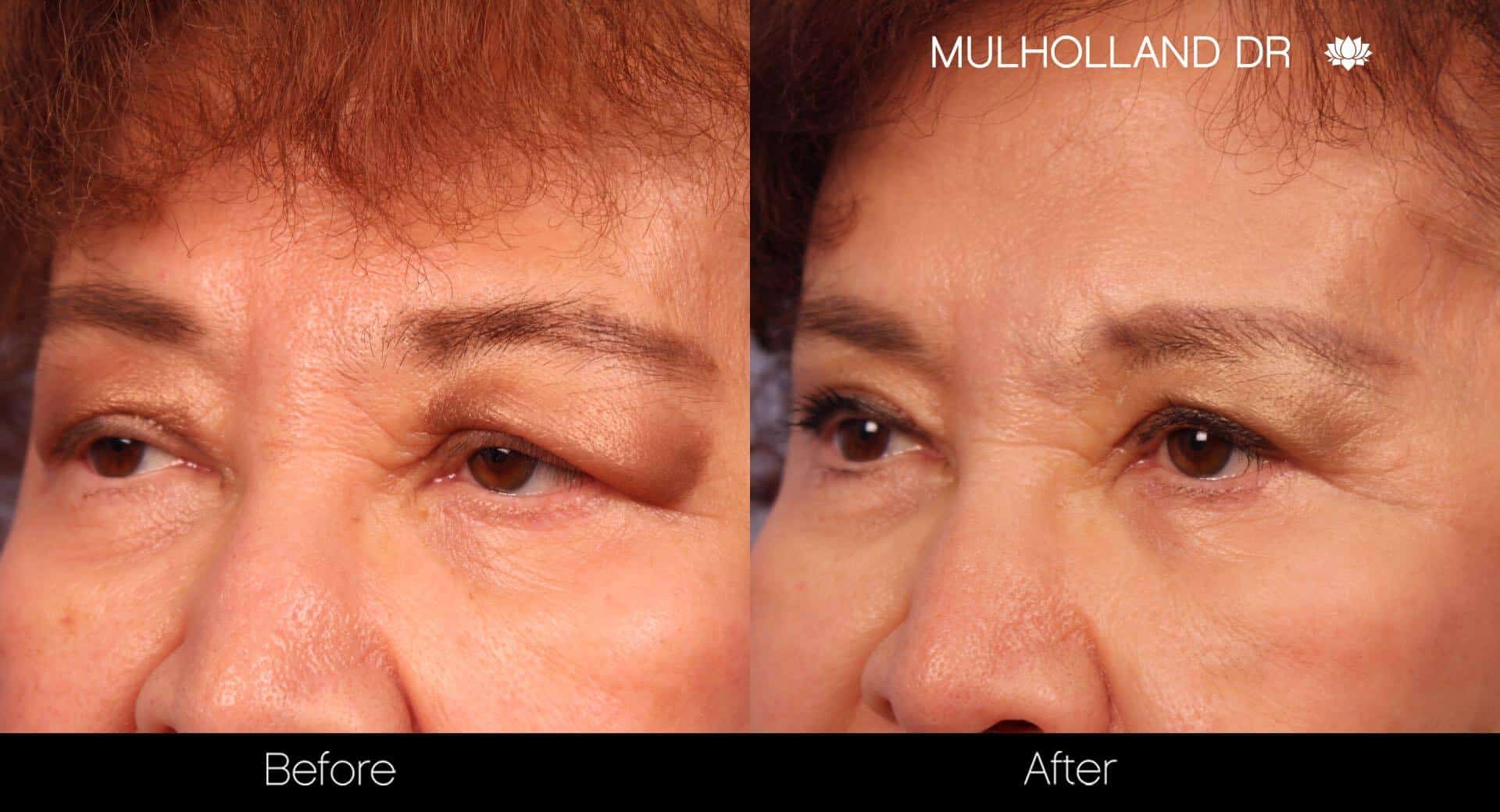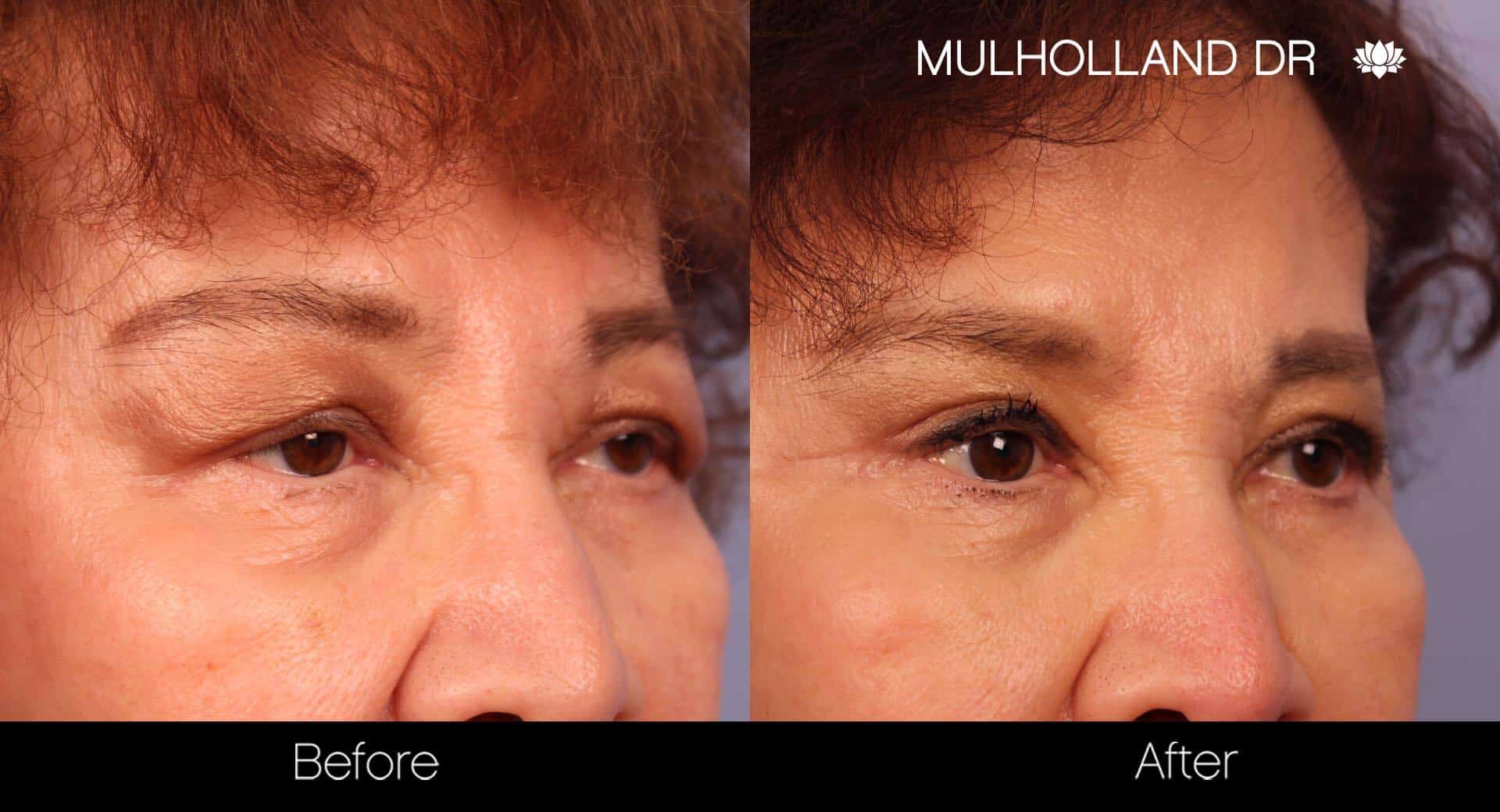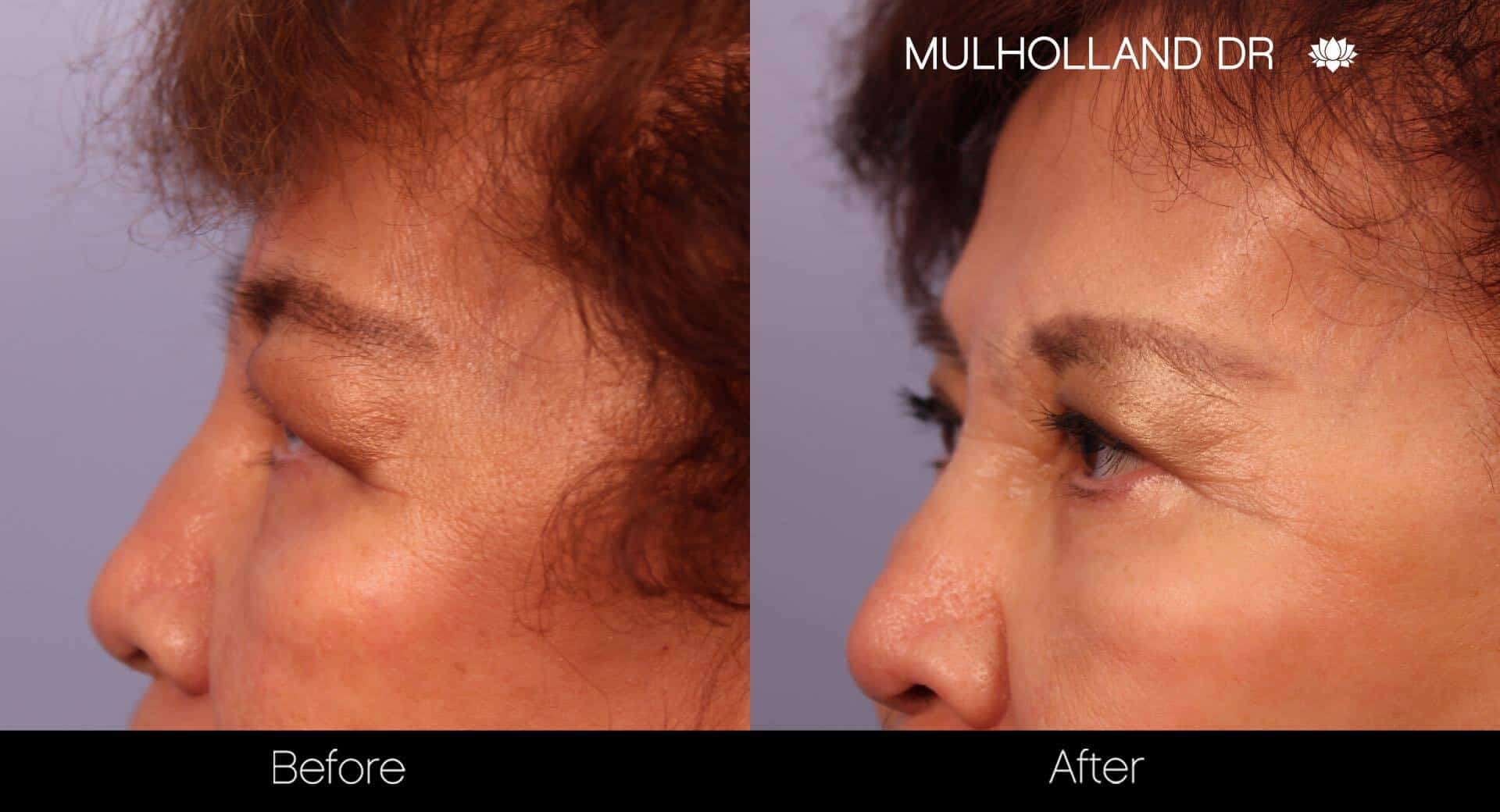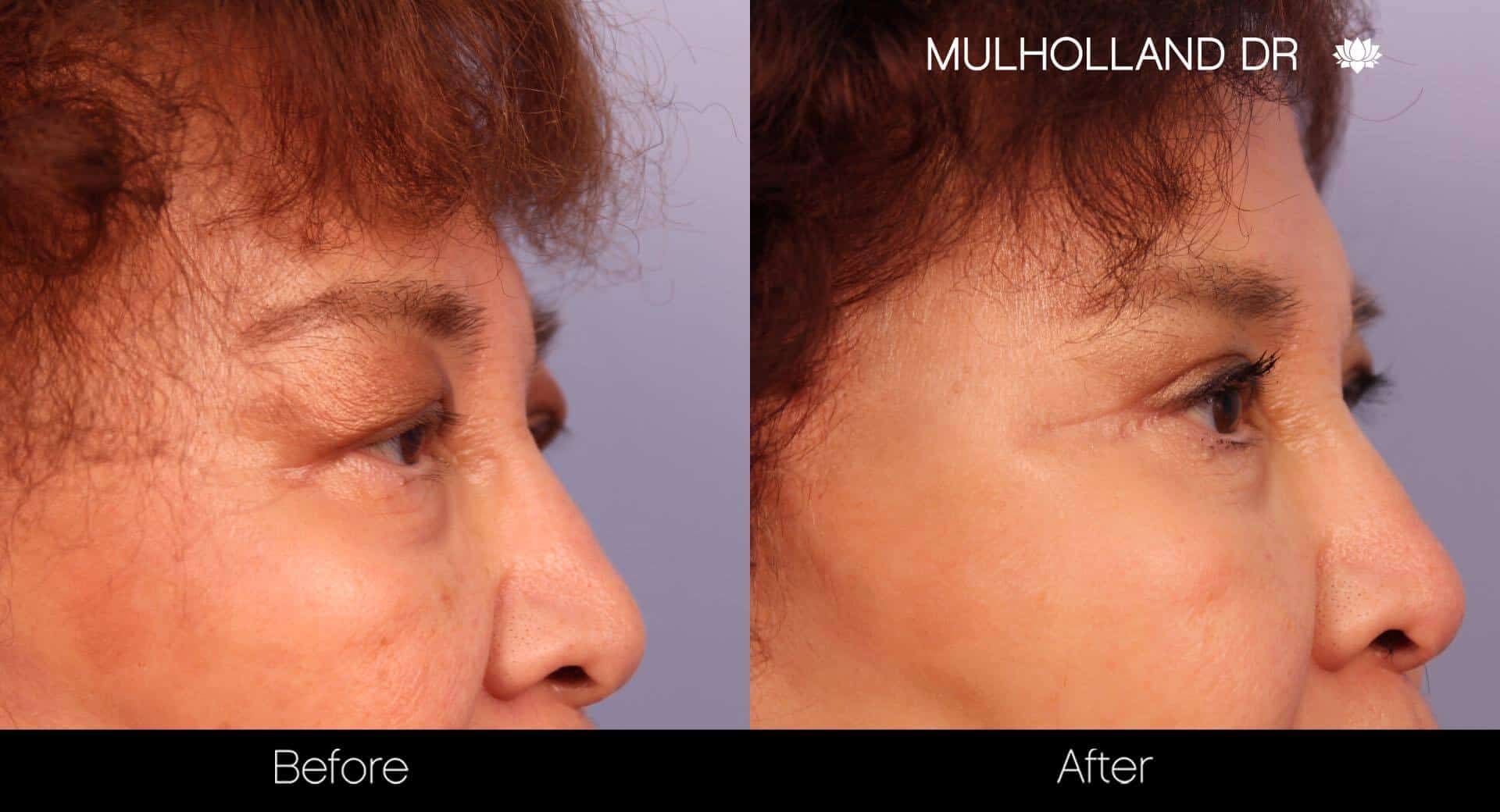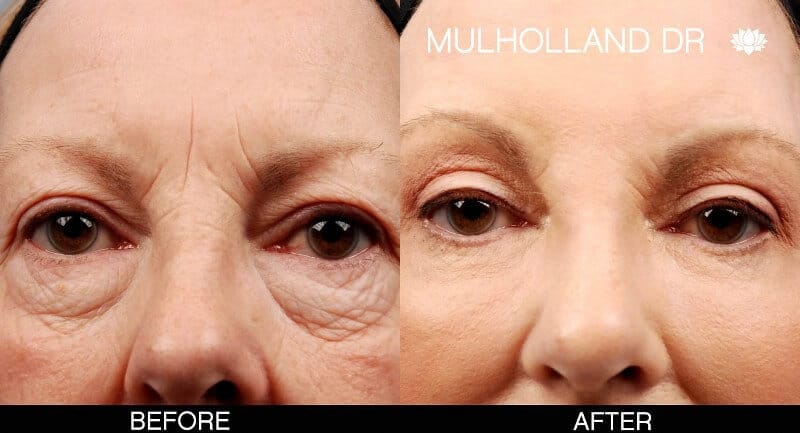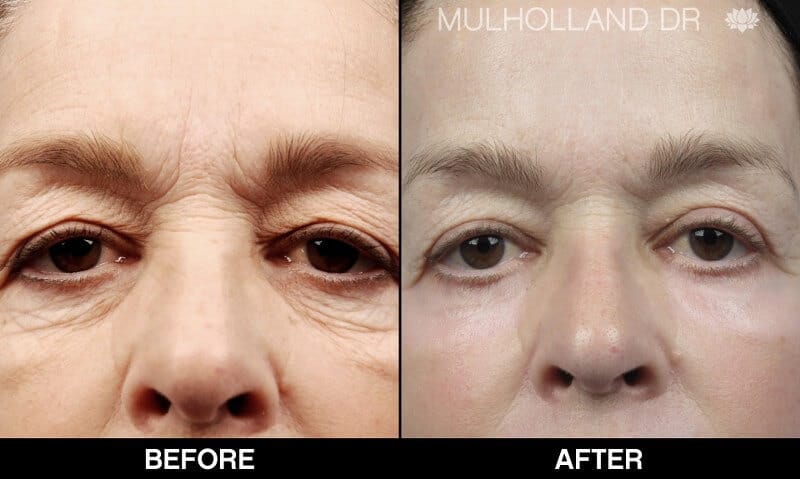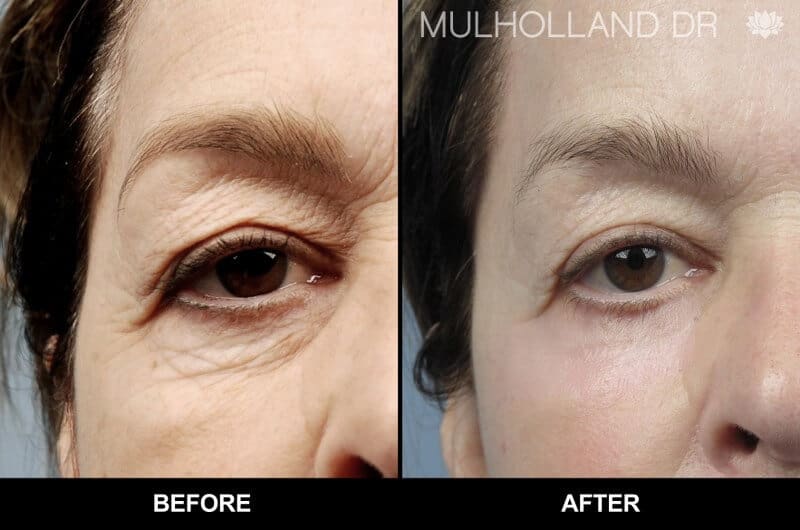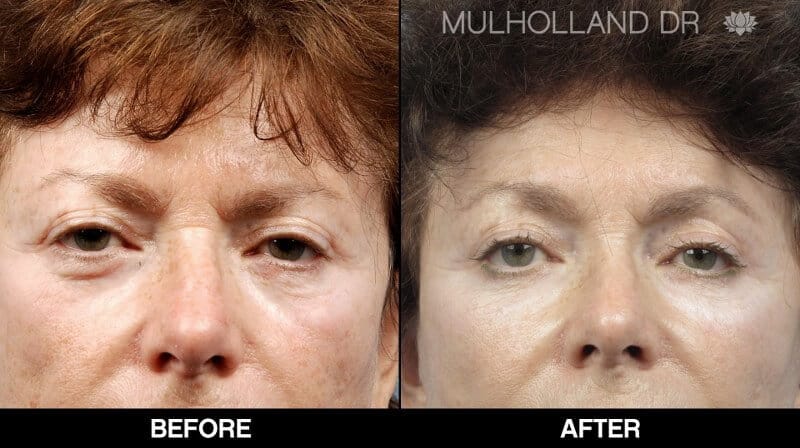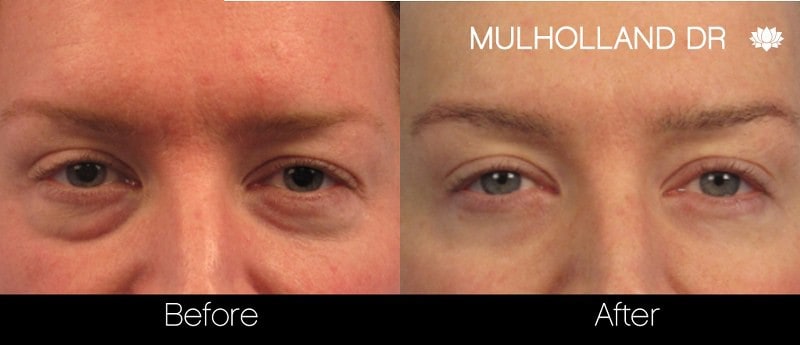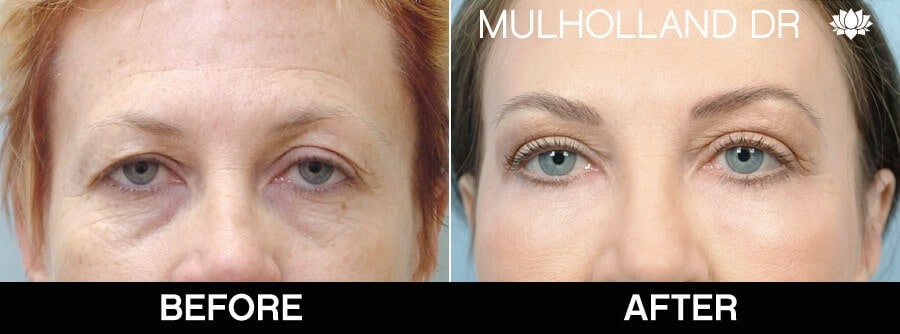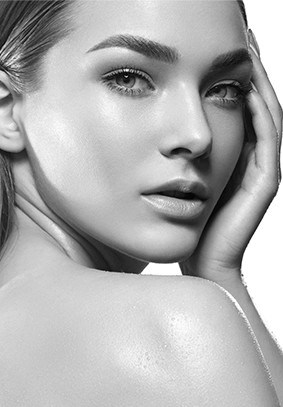-
 Price Starts at $7,900
Price Starts at $7,900
-
 Procedure Time 2-3 hours
Procedure Time 2-3 hours
-
 Recovery Time 7-10 days
Recovery Time 7-10 days
Cost of Blepharoplasty (Eyelid Surgery)
At Toronto Plastic Surgeons, blepharoplasty pricing depends on the type of procedure:
-
Upper blepharoplasty starts at $7,900
-
Lower blepharoplasty starts at $9,900
-
Upper + lower blepharoplasty combined starts at $15,500
Because these eyelid surgeries are considered cosmetic and elective, they are not covered by insurance. However, financing options are available for patients who wish to rejuvenate their eye area.
How Long Does it Take to Recover From a Blepharoplasty?
The recovery time from eyelid surgery in Toronto is, on average, 7-10 days.
How Long Does Blepharoplasty Surgery Take?
This entirely depends on the type of blepharoplasty the patient would like to undergo. Generally, upper eyelid surgery, lower eyelid surgery, or double blepharoplasty procedures performed by Dr. Asif Pirani in Toronto can take 1-2 hours.
What is a Blepharoplasty?
A blepharoplasty, commonly referred to as eyelid surgery (or eye bag surgery), removes or tightens sagging skin, bulging fat, and excess muscle around the eyes, resulting in a smoother, more youthful appearance that can help slow down the aging process.
For blepharoplasty on the upper eyelids, the surgeon cuts along the fold of the eyelid and removes the excess skin. For lower eyelid surgery, the surgeon removes and redistributes the excess skin and fat.
At TPS, all Toronto eyelid surgeries are administered under local or general anesthesia with IV sedation. Our on-site surgical suite, recovery, and overnight rooms exceed the highest levels of certification, making our plastic surgery centre one of the most dependable and elevated experiences in pre and post-op care.
Blepharoplasty Recovery & Timeline
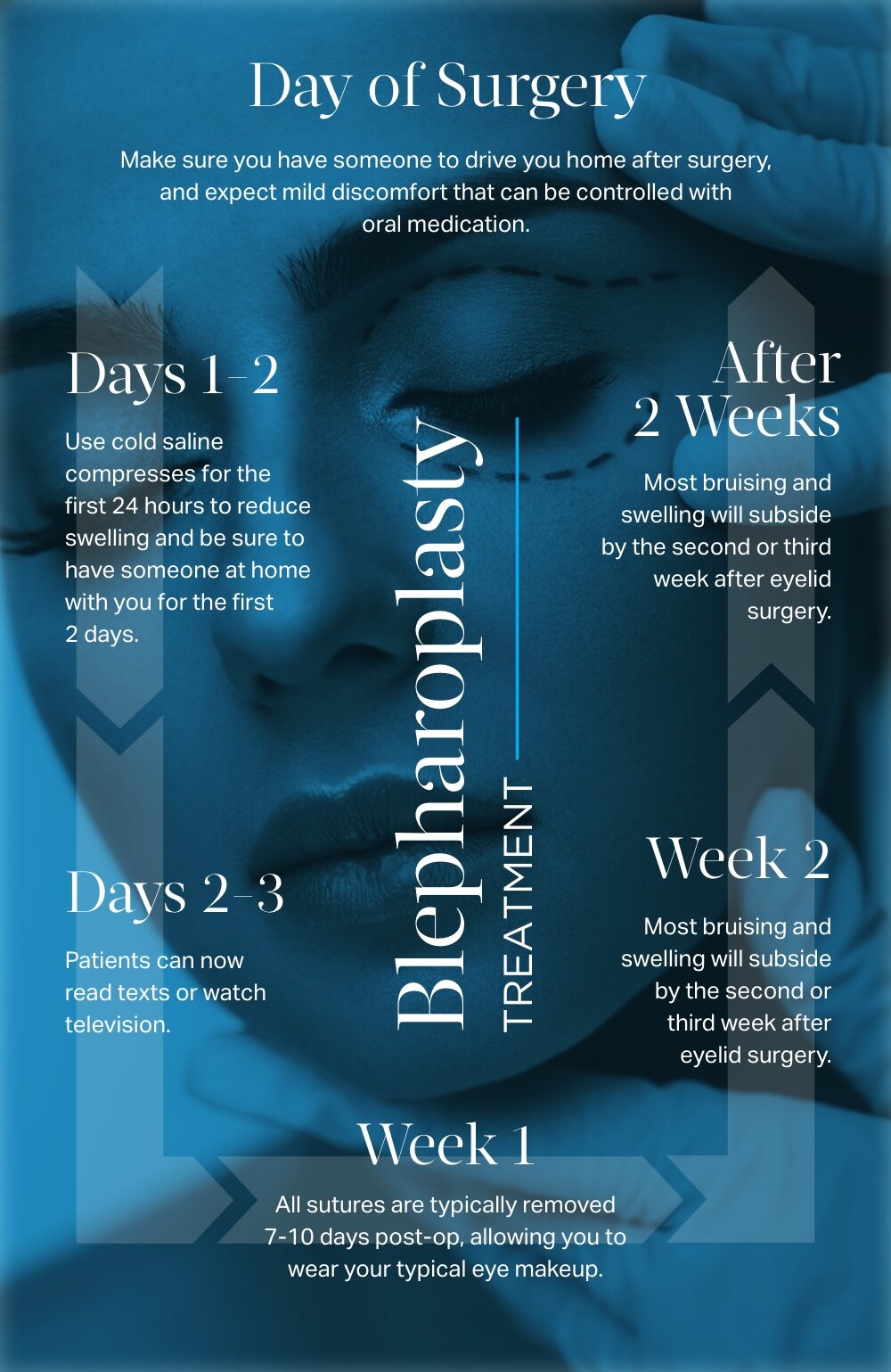
Day of surgery: Schedule a friend or family member to drive you home after surgery. After eye bag surgery, initial mild discomfort is controlled easily with oral medication, bruising and sensitivity to light can last for up to 2 weeks.
Days 1-2: Use cold saline compresses for the first 24 hours for comfort and to reduce swelling and bruising. Ensure someone is at home with you for at least 1-2 days post-op.
Days 2-3: Patients can now read texts or watch television.
Week 1: All sutures are typically removed 7-10 days post-op, allowing you to wear your typical eye makeup.
Week 2: You will have scheduled 2-3 post-op care appointments in the first 2 weeks at TPS, with Toronto Plastic Surgeons’s very experienced post-op RN team. Wait at least 2 weeks before wearing contact lenses. You can return to work in 10-14 days.
After 2 Weeks: Most bruising and swelling will subside by the second or third week after eyelid surgery. Expect temporary bruising and swelling of the eyelids.
After your surgery, you should:
- Avoid any high-impact exercises for at least 2-3 weeks.
- Keep incisions clean with soap and water and inspect daily for signs of infection.
- Take pain medication as prescribed, and do not take any aspirin or products containing aspirin unless your surgeon approves.
- Sleep with your head elevated at a 45-degree angle for several days to minimize swelling.
- Avoid exposing scars to the sun for at least 12 months, and always use a strong sunblock if exposure is unavoidable.
What Can Blepharoplasty Treat?
Blepharoplasty can treat:
- Droopy upper eyelids
- Excess skin of the upper or lower eyelids
- Under eye bags
Blepharoplasty is usually done for cosmetic reasons to slow down the aging process, but it can also improve sight by lifting the upper eyelids/removing excess skin that might be blocking your eye from seeing everything. Upper eyelid surgery and lower eyelid surgery can also help reduce signs of thyroid problems and boost self esteem.
You can always combine your Toronto eyelid surgery with laser resurfacing, forehead lifts, or dermal fillers/Botox to bring even more youthfulness to your newly rejuvenated appearance.
Am I a Good Candidate for Blepharoplasty?
The right candidates for eyelid surgery in Toronto are generally over the age of 30, and tend to be healthy and fit. All those with signs of aging in the upper or lower eyelid may be suited for this type of plastic surgery.
Ideal candidates usually struggle with the following:
- Upper and lower eyelid excess skin
- Upper and lower eyelid excess fat pads
- Wrinkled skin and creping around the eyes
- Lower lid bags and dark circles
- Lower lid muscle bulge or “tootsie roll”
- Lower lid tear trough
To undergo this surgery, you must be:
- At least 18 years old
- Physically, mentally, and emotionally healthy
- Free of any conditions which may affect the look of your eyes, such as allergies or thyroid issues
- Clear of medical conditions that may affect your vision, such as diabetes, macular degeneration, glaucoma, or cataracts
- Blepharoplasty patients must have realistic expectations about what eyelid surgery can accomplish for your appearance
4 Blepharoplasty Benefits
1) Restore Your Self Esteem
Moderate swelling, puffiness, lines, wrinkles, and excess flesh under and over the eyes are natural parts of aging. Though for many men and women, it’s not a welcome part of the aging process! A lower eyelid lift and/or upper eyelid surgery in Toronto will not only involve sagging skin removal, but it also reduces the look of wrinkles, eye bags, and the appearance of dark circles under the eye.
2) Feel and Look Younger
Blepharoplasty is a powerful way to give your facial features a revived appearance, enhancing the shape and appearance of your eyes. Those who undergo this eye lift surgery tend to look years younger, more awake, refreshed, and natural.
3) Fewer Fine Lines and Wrinkles
While this is not the primary goal of cosmetic eyelid surgery, many patients notice an improvement in the upper and lower lid lines and wrinkles. Lifting both the upper and lower lids can reduce the number of deep, fine lines, and crow’s feet around the eyes, resulting in full eyelid rejuvenation.
4) Minimal Scarring
The scarring involved in upper eyelid surgery and lower eyelid surgery is barely noticeable. In fact, any scarring is expertly hidden in the natural folds of the eyelids. This benefit is vital in ensuring that the results of the eye lift and skin removal involved in Blepharoplasty are long-lasting and natural-looking.
Blepharoplasty Risks & Complications
Like all procedures, blepharoplasty comes with the risk of potential complications. Although Toronto Plastic Surgeons has not seen most of the risks listed below, these risks have been reported during upper eyelid surgery and lower eyelid surgery, as well as during eyelid surgery recovery:
- Mild Discomfort. While some patients describe mild discomfort during the treatment itself, the recovery period is known to be pain-free.
- Discolouration. A Blepharoplasty can potentially lead to a slight discolouration on the skin surrounding the eyelids. However, colour should return to the area in the days following the procedure.
- Adverse Effects of Anesthesia. Some patients may experience adverse effects from the anesthesia involved in the surgery. Prior to your surgery, Toronto Plastic Surgeons will review your medical history to determine the best sedation for your condition.
- Bruising. In rare cases, the procedure may result in bruising that can last several days.
Why Choose Toronto Plastic Surgeons for Blepharoplasty?
Choosing the right surgeon is critical to achieving natural, balanced eyelid surgery results.
At Toronto Plastic Surgeons, Dr. Asif Pirani specializes in both functional and cosmetic eyelid procedures, with advanced expertise in upper, lower, and combination blepharoplasty.
For patients seeking specialized approaches — such as Asian eyelid surgery or the correction of ptosis — Dr. Pirani develops a sensitive, customized treatment plan that respects individual anatomy and goals. His board certification, advanced fellowship training, and reputation for patient-centered care have made him one of Toronto’s most trusted surgeons for eyelid rejuvenation.
Different Types of Blepharoplasty
1) Eyelid Lift
An eyelid lift can refer to ptosis repair or upper eyelid surgery. Blepharoplasty, or eyelid surgery, refers to fatty deposits and excess skin being trimmed away from the upper eyelid or lower eyelid to make you look more awake and youthful. Ptosis repair surgery involves repairing the upper eyelid’s muscle to elevate the upper lid’s height.
2) Lower Blepharoplasty (Eyelid Surgery)
Lower eyelid surgery tightens and repositions the lower eyelids to create a more contoured appearance. A small incision is made along the lower lids, and fat and excess tissue are removed or repositioned.
3) Upper Blepharoplasty (Eyelid Surgery)
Upper eyelid surgery helps remove excess upper eyelid skin and can also reduce bulging fat pads in the area. Excess skin and fat is removed during the surgical procedure, and sometimes a thin strip of muscle is also removed during the procedure.
Non-Surgical Blepharoplasty Alternatives
Many non-surgical blepharoplasty alternatives are available, such as:
- Accutite (LidTite) bipolar radiofrequency lid tightening
- Morpheus8
- Fractional CO2
- Soft tissue dermal fillers
- Botox injectable
These can all be used on the upper and lower eyelids with great success. These non-surgical alternatives often make a significant difference and, while they do not replace blepharoplasty surgery, represent a good option for patients who are unable to undergo more invasive surgery.
How to Prepare for a Blepharoplasty
A thorough consultation and preparation process is key to a successful blepharoplasty. During your private consultation, our surgeons assess your needs through a detailed eye exam, cosmetic eyelid analysis, and discussions about your goals. Depending on your health profile, preparations may include blood tests.
To ensure successful blepharoplasty surgery, you will be advised to take the following precautions:
- A pre-op evaluation for ocular diseases is essential, and Toronto Plastic Surgeons will discuss this during your consultation.
- Avoid anti-inflammatory medications, Vitamin E, herbal supplements, or any medications containing these compounds for two weeks before surgery.
- Refrain from smoking 2 weeks before and 2 weeks after surgery.
- Avoid sun damage 2 weeks before surgery. We recommend wearing an SPF 30 or higher.
- Your prescriptions (typically an antibiotic and pain medication) will be given to you on the day of your pre-operative appointment.
- Do not eat or drink anything, including water, after midnight on the night before your surgery.
- Arrange for a friend or family member to take you home after the procedure.
- Have eye drops ready for after your procedure.
Best Procedures Paired with Blepharoplasty
Blepharoplasty surgery goes very well with a brow lift, cheek lift, threadlift, dermal fillers, Botox injectables and fractional RF/Morpheus resurfacing.
Combining a blepharoplasty with these complementary procedures can significantly enhance the overall results.
Blepharoplasty surgery goes very well with:
- Brow Lift
- Cheek Lift
- Threadlift
- Dermal fillers
- Botox injectables
- Fractional RF/Morpheus resurfacing
Combining a blepharoplasty with these complementary procedures can significantly enhance the overall results.
Blepharoplasty FAQs
How Do I Know If I Need an Eyelid Lift or Brow Lift?
If people often confuse your resting facial expression for anger, a brow lift may be for you. If, on the other hand, people constantly ask if you are tired, or if you did not sleep the night before, then a lower lid blepharoplasty may be best.
Is There an Age Limit for Blepharoplasty?
Age is not a factor in blepharoplasty, but your overall health is. If you can safely be administered local anesthetic and meet the candidate criteria, then you can safely undergo blepharoplasty.
Do I need a General Anesthetic for a Blepharoplasty Surgery?
Your blepharoplasty surgery is best performed under local anesthesia and light “twilight” sedation. However, if you would like to receive general anesthesia, TPS is fully certified to provide this type of sedation to blepharoplasty patients.
Will I be in Pain Afterwards?
Following surgery, your eyelids may feel uncomfortable and irritated. Your doctor will give you medicine to help with this pain and discomfort.
How to Apply Makeup After Blepharoplasty?
It is advised to wait for a full recovery, or 10 days, to start wearing makeup again. Once your incisions are healed, it is crucial to use your makeup carefully, clean your brushes regularly, and avoid applying makeup with your fingers.
Can I Have Blepharoplasty After Laser Vision Correction Surgery?
If you’re hoping to receive both a blepharoplasty and a laser vision correction procedure, it’s ideal to have laser eye surgery before blepharoplasty. This allows for any corneal stress and swelling to dissipate around the eye area. Your doctor will most likely advise you to wait at least 6 months between procedures.
How Many Times Can You Have a Blepharoplasty?
If the initial blepharoplasty is performed at a young age, a second blepharoplasty can be performed after the patient has aged more, but it is typically not desirable to have this operation more than twice.
Can Blepharoplasty Change the Shape of Your Eyes?
While it is possible to change your eye’s shape with blepharoplasty if this is the desired effect, it is not the goal of the procedure.
What Is a Pinch Blepharoplasty?
The pinch blepharoplasty technique is designed for patients with too much skin along their lower eyelids and is perfect for perking up eyes that can benefit from a minor alteration. Excess skin along the lower lids can cause minor sagging, or skin folds that resemble wrinkles, and pinch eyelid surgery eliminates this excess skin without altering the fatty tissues or muscles underneath.
Can Droopy Eyelids Affect Your Vision?
Yes. The two eye conditions which cause drooping eyelids and reduced vision are dermatochalasis and ptosis. Dermatochalasis is characterized by excessive eyelid skin and presents more commonly on the upper eyelid. An advanced case can impair your vision, particularly your peripheral vision. Ptosis is usually caused by muscle weakness and can occur at birth or develop due to aging. When the eyelid muscles are not working due to ptosis, the lid begins to droop down into the field of vision.
Can I Watch TV After Eyelid Surgery?
You should be able to watch TV again 3-4 days post-surgery.
How Is a Lower Blepharoplasty Performed?
A lower blepharoplasty targets the lower eyelids and is performed with an internal (or transconjunctival) incision, placed inside the lower eyelid. Your surgeon then removes or redistributes excess fat, muscle, and sagging skin before closing your incision back up.
Blepharoplasty Testimonials
“Testimonial 1: I am so very pleased with my experience with Toronto Plastic Surgeons and his team. I had face, neck, and eyelid surgery as well as under-eye fat transplant and my results are amazing. True to his word Toronto Plastic Surgeons gave me a gentle and lovely improvement – a natural well-rested younger-looking me that is undetectable as ‘surgery’. Toronto Plastic Surgeons and his team at TPS should be your first and last stop.” – RealSelf.
